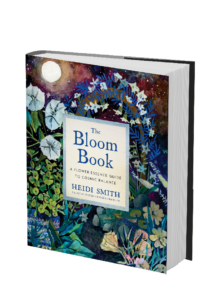Plants, People, and Cosmic Balance: A Healing Justice Invitation
Plant medicine has always been the people’s medicine, and flower essences create unique opportunities for issues surrounding accessibility, as essences are extremely safe and can be made rather inexpensively. The shift toward holism—complementary and alternative medicine (CAM) and integrative medicine—and the proliferation of herbal interventions within our health-care system are proof that we are making progress. In light of this, there are a number of dynamic ways we can promote flower essences to be even more accessible and inclusive for people. Even flower essence therapy itself is a modality historically dominated by white men, but increasingly it is being pushed forward by women-identified, LGBTQIA+, and BIPOC healers.
Currently, the alternative healing community is processing its own biases. Much of alternative medicine was developed in the service of the dominant culture, or the patriarchy. Therefore, it hasn’t been a healing space for many groups, including but not limited to women, people of color (BIPOC), LGBTQIA+, people with disabilities, economically oppressed people, neurodiverse people, and (in the United States) non-native English speakers. In the words of Cara Page, a founding member of Kindred Southern Healing Justice Collective, healing justice “identifies how we can holistically respond to and intervene on generational trauma and violence, and to bring collective practices that can impact and transform the consequences of oppression on our bodies, hearts, and minds.”
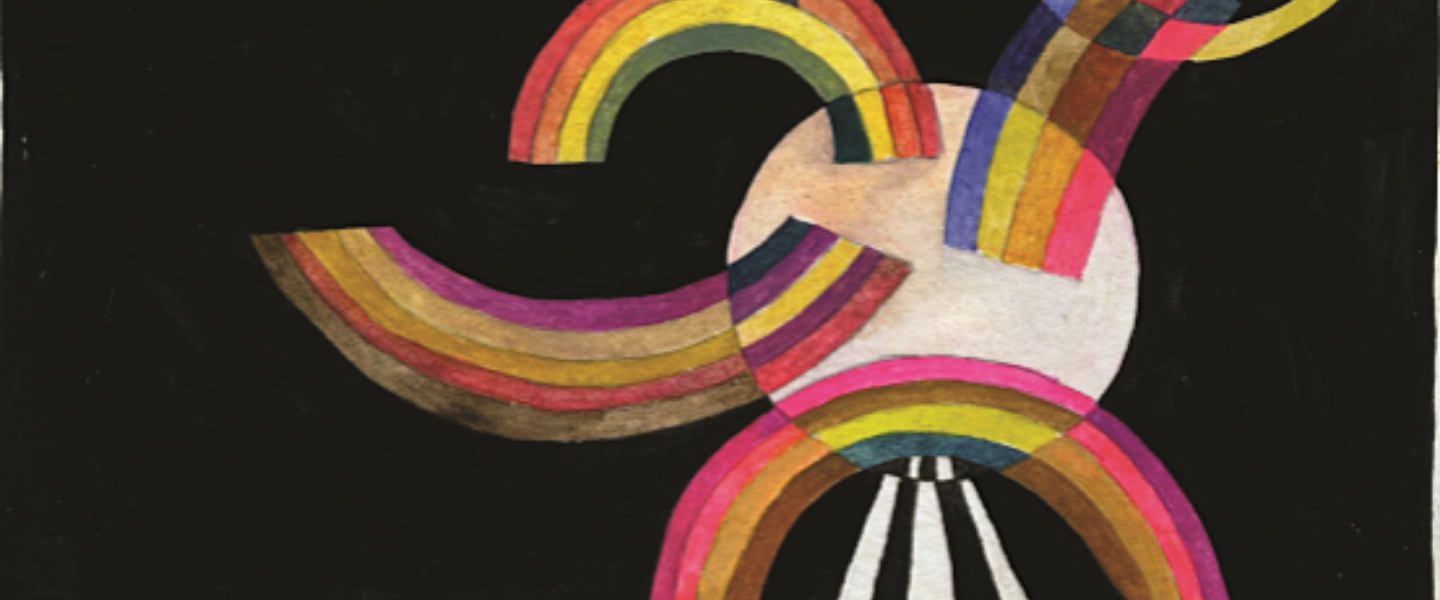
One of the main themes of The Bloom Book involves balancing duality, which means challenging the perpetuation of oppressive systems. Unless we are actively engaged in dismantling racism, sexism, homophobia, transphobia, xenophobia, and ableism, we are merely reinforcing the power structures we are claiming to challenge. As models of healing justice are emerging, many organizations and community collectives are generating their own missions and value statements from which to work. Meanwhile, practitioners—especially white practitioners like me—have to ask ourselves:
How is my work a function of my privilege?
Where can I be doing better?
Does my practice truly support inclusivity, diversity, and accessibility?
The working definitions of healing and trauma are also evolving. Within a healing justice framework, one can see how, by understanding trauma merely as “an emotional response to a terrible event,” we are ignoring a more inclusive interpretation that includes the cumulative and historical trauma of colonization. In the last decade, science has validated that trauma is intergenerational and historical. Likewise, many traditions include community in what constitutes emotional and spiritual healing, whereas Western models of mental health are focused exclusively on the individual self.
When you open yourself up to the plant kingdom, new awareness can develop. You can become more empathic, which sounds pleasant in theory, but can be overwhelming because now you’re not just experiencing more of your own feelings, but the feelings of others as well. If you’re committed to applying a healing justice framework in your work, you will likely expose new trauma and have to reckon with your own privilege, which can be painful. You could develop more attunement with nature, which also can feel wonderful and, because of the tragic state of our Earth, completely disorienting. At this time, we are experiencing a heightened polarity between the light and the dark. We are being asked to hold a neutral space for all this duality and to have more compassion for all life. Flower essences enhance the energetic interconnection between all living things and so are especially well suited to support an expansion of consciousness.
Understanding how we function within—and our responsibility to—the collective is important because none of us operates alone. If you forget what you derive from the collective, you assume you don’t owe it anything and exist separately from everyone. Much of the privileged world enjoys the benefits of being part of the collective, whether we are conscious of it or not: rights, amenities, protection, accessible health care, clean drinking water, electricity, and so on. So, those with the material upper hand at this time have a special responsibility to the rest of those sharing the Earth.
Within a healing justice framework, we must not only question our privilege as white people, we must elevate BIPOC leadership within all the transformative justice movements. We are all dependent on one another to collectively wake up and heal.
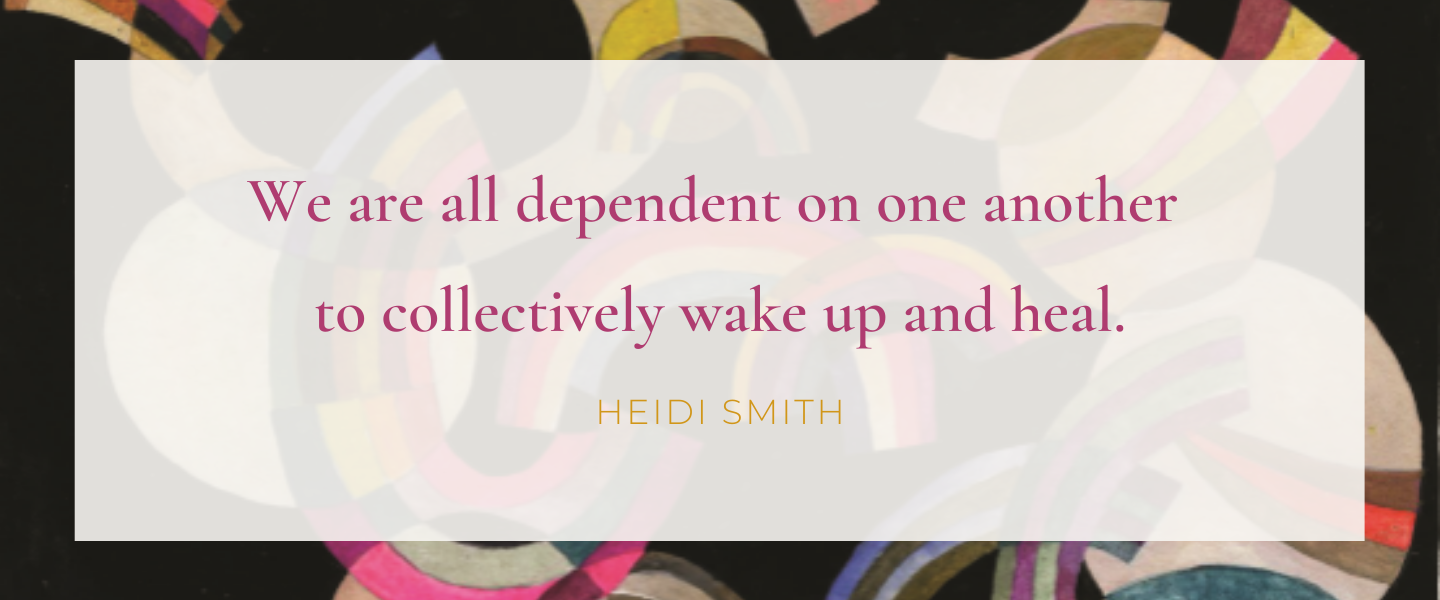
In this way, it is an exciting time for the community of herbalists and flower essence practitioners. Modalities that are so helpful in bringing people into balance are themselves coming into greater balance. A sign of hope within an era of great hope. The ancient wisdom explored in The Bloom Book supports that the power of the plants is coming through in dynamic new ways. This text exists, in part, to provide more context around the validity and potency of the flowers. The spectrum of human emotional experience is here for our development and delight.
The Absence of Women-Identified, WOC, and QTBIPOC Healers Throughout History
Missing from our Western history books are most of the contributions by women-identified healers through the ages. Even more scarce are WOC, and most scarce are queer and trans people of color (QTBIPOC) within the codex of Western medical history. The misogyny of the burgeoning patriarchy from ancient Greece spread throughout Europe, Africa, the Americas, and the rest of the world through colonization by white settlers. The suppression of women healers in Europe and the Americas coincided with the rise of the ruling class, capitalism, and the privatization of medical care, away from folk-healing traditions—traditions that women played a huge role in preserving and advancing. Gender seemed to be less of a construct throughout many parts of the ancient world, as there are significant written reports of intersex and gender-fluid healers. In many cases, those who exhibited androgyny were known as having special healing powers because of their ability to connect with both masculine and feminine energy.

As historical contexts are becoming more inclusive and less Eurocentric, there is more room for the theory around matriarchal-centered civilizations being much more prominent than previously thought. Senegalese anthropologist and historian Cheikh Anta Diop felt that, historically, most of Africa was matriarchal in organization. Colonizers were tremendously misogynistic, which holds much information for us to ponder as we consider our connection to the feminine and the history of medicine.
The lack of representation of women and WOC healers in the historical literature of medicine is decidedly a Western trait. Not only is much history transmitted orally and through practices and traditions, but the written history is also a very biased account, formulated in large part by, and for, white men. While our participation in medicine and healing traditions has been historically restricted in the West, women have long been associated with healing, especially within the domains of life and death—as midwives and compassionate caregivers helping to bring new life and support the soul into the afterlife. Women healers have traditionally addressed the issues and needs of populations that our culture typically shames and would rather ignore. Written accounts are limited, but we do have a record of a talented few. We must honor the oral traditions that are not meant to be shared (by me anyway) with the mainstream. There is a protection in keeping knowledge hidden from the masses. This wisdom is secured within the light lineage of all healers.
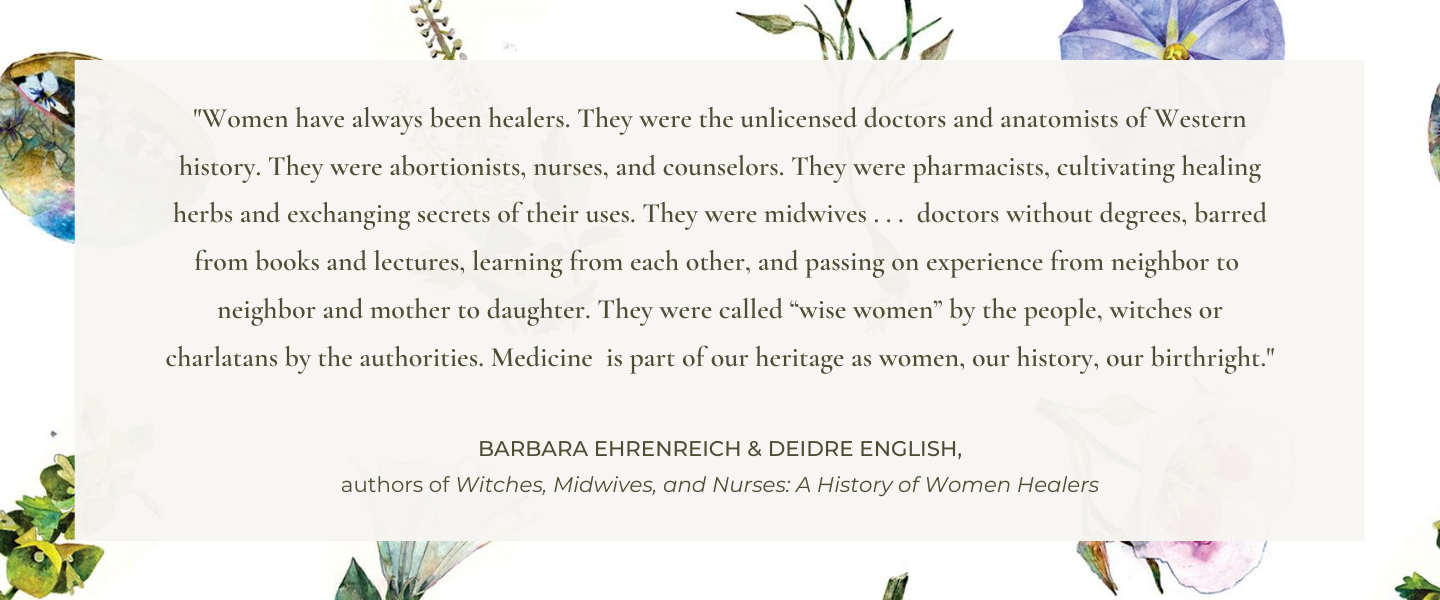
Conclusion
The social and healing justice movements have affected me deeply, and it is my sincere hope that we can continue to decolonize and dismantle where dominant systems are limiting the positive proliferation of alternative healing and flower essence therapy to make them more accessible and inclusive. The more we come into balance in this way, the more transformation is available to us all, our communities, and our Earth—and the more we maintain plant medicine as medicine for all people.
Healing Justice Flower Essence Allies
There are a number of herbalists such as Karen Rose of Sacred Vibes Apothecary, Jennifer Patterson of Corpus Ritual (also a Bloom Book contributor), Lauren Giambrone of Goodfight Herb Co., and Amanda David of Rootwork Herbals, (to name a few), who have been speaking on the subject of healing justice for quite some time, and I am grateful for their leadership and inspiration. Healing justice business models such as that of Third Root, a worker-owned community center that provides collaborative, holistic health care in Brooklyn, offers a standard that everyone in the healing arts should aspire to.
I offer some essences below that are wonderful to use in process groups or healing circles that center on antiracism and anti-oppression work. Some flower allies to assist you as you dig deeper into this rich and rewarding terrain are:
Delta Gardens lemon balm—a wonderful essence for when you are immersed in deep work, to keep calm and carry on
Delta Gardens valerian—for any resistance to change, to be able to take in and assimilate new information
Flower Essence Society quaking grass—“harmonious community consciousness,” letting go of personal attachments in social groups
Flower Essence Society lupine—seeing beyond the level of self, seeing self as part of the whole
Flower Essence Society or Delta Gardens echinacea—integration of those parts of the self that may have been repressed
Flower Essence Society or Delta Gardens borage—to support the heart and offer courage
Bach Original Flower Remedies water lily—for humility and wisdom in communication, to heal the perceived separation we feel from others based on race, class, or gender
Flower Essence Society pink yarrow—for emotional vulnerability, assists in discerning what is your responsibility to emotionally process
Additional Information on Healing Justice
A Not-So-Brief History of the Healing Justice Movement, 2010-2016
What Is Healing Justice?—Healing by Choice Detroit
Healing Justice: Holistic Self-Care for Change Makers—Transform Network

Heidi Smith, MA, RH (AHG), is a psychosomatic therapist, registered herbalist, and flower essence practitioner. Within her private practice, Moon & Bloom, Heidi works collaboratively with her clients to empower greater balance, actualization, and soul-level healing within themselves. She is passionate about engaging both the spiritual and scientific dimensions of the plant kingdom, and sees plant medicine and ritual as radical ways to promote individual, collective, and planetary healing. She lives in Brooklyn, New York, with her partner and two cats. For more, visit moonandbloom.com.
Learn More
Sounds True | Amazon | Barnes & Noble | Bookshop
What Your Feelings Are Trying to Tell You
Lorem ipsum dolor sit amet, consectetur adipiscing elit. Ut elit tellus, luctus nec ullamcorper mattis, pulvinar dapibus leo.
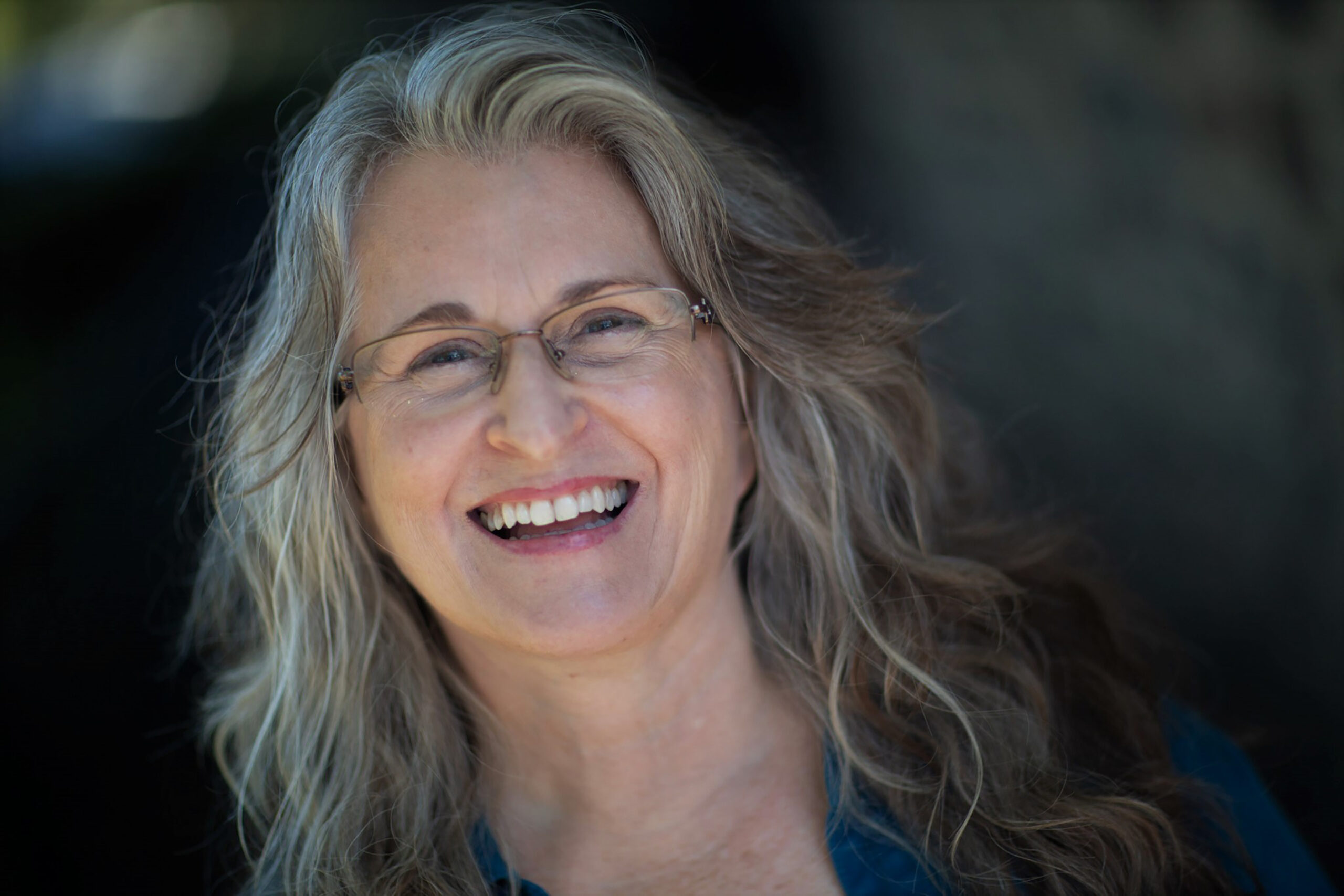
Karla McLaren, M.Ed., is an award-winning author, social science researcher, and empathy innovator. She is CEO of Emotion Dynamics Inc., developer of Dynamic Emotional Integration®, and creator of EmpathyAcademy.org. Karla is the author of Embracing Anxiety, The Dynamic Emotional Integration Workbook, The Art of Empathy, The Power of Emotions at Work, and the multimedia online course Emotional Flow: Becoming Fluent in the Language of Emotions. For more, visit karlamclaren.com.
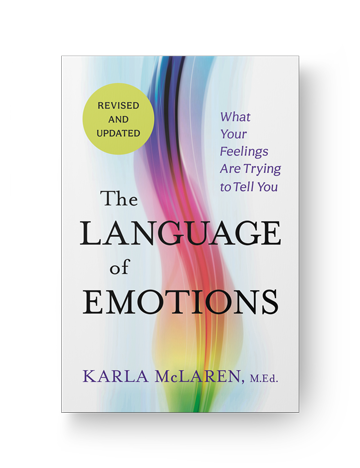
Learn More
Amazon | Barnes & Noble | Bookshop | Sounds True
“Cranky” Is a Perfect Word
Dear Sounds True Friends,
“Cranky” is a perfect word. It feels like it sounds; the way it forms in your mouth fits the emotion. It’s perfect for that place between truly sad and properly angry, for times when we ought not to get so upset about trifling things, but we can’t help it. At least, not at first.
We’re allowed to be sad when hard times come. We’re allowed to be angry in the face of real injustice. But the papercuts of life? The whacked elbows and burnt toast, the stolen parking spots and somebody-took-the-last-cookie days? Not so much.
We’re supposed to take those moments in stride. We’re supposed to maintain our equilibrium. But moods are unruly and feelings don’t like to be bossed around. “Cranky” is the perfect word for those times when we feel resentful, irritated, and annoyed, but we know our cause isn’t especially sympathetic. When Murphy’s Law strikes, and we’re not yet ready to laugh it off.
I’m supposed to be patient and mature at times like these, but I can be a great big Crankypants. Knowing I’m not supposed to feel cranky only makes me more cranky. Next thing you know, I’m spiraling. (I’m probably the only one …)

Kids are no different. Life in families presents us all with nuisances and irritations. No one escapes a school day or a trip to the store unscathed. Life jostles us, but for kids, whose time and choices are largely directed by others, those feelings of powerlessness, of being managed and judged by someone who just doesn’t get it—and to be fair, sometimes we don’t get it; we weren’t there; we are quick to assume—those feelings can be maddening.
I wrote Cranky Right Now to give kids, parents, families, and teachers a way to talk about cranky times. and especially, a way to laugh about them. Illustrator extraordinaire Holly Hatam’s hilarious illustrations bring the magic. I hope you’ll giggle along with the vexed heroine of Cranky. It’s actually the first step forward. It’s easier to spot the absurdity in someone else’s cranky fit than our own, but the lessons still sink in. Humor is a powerful antidote to being a Crankypants.
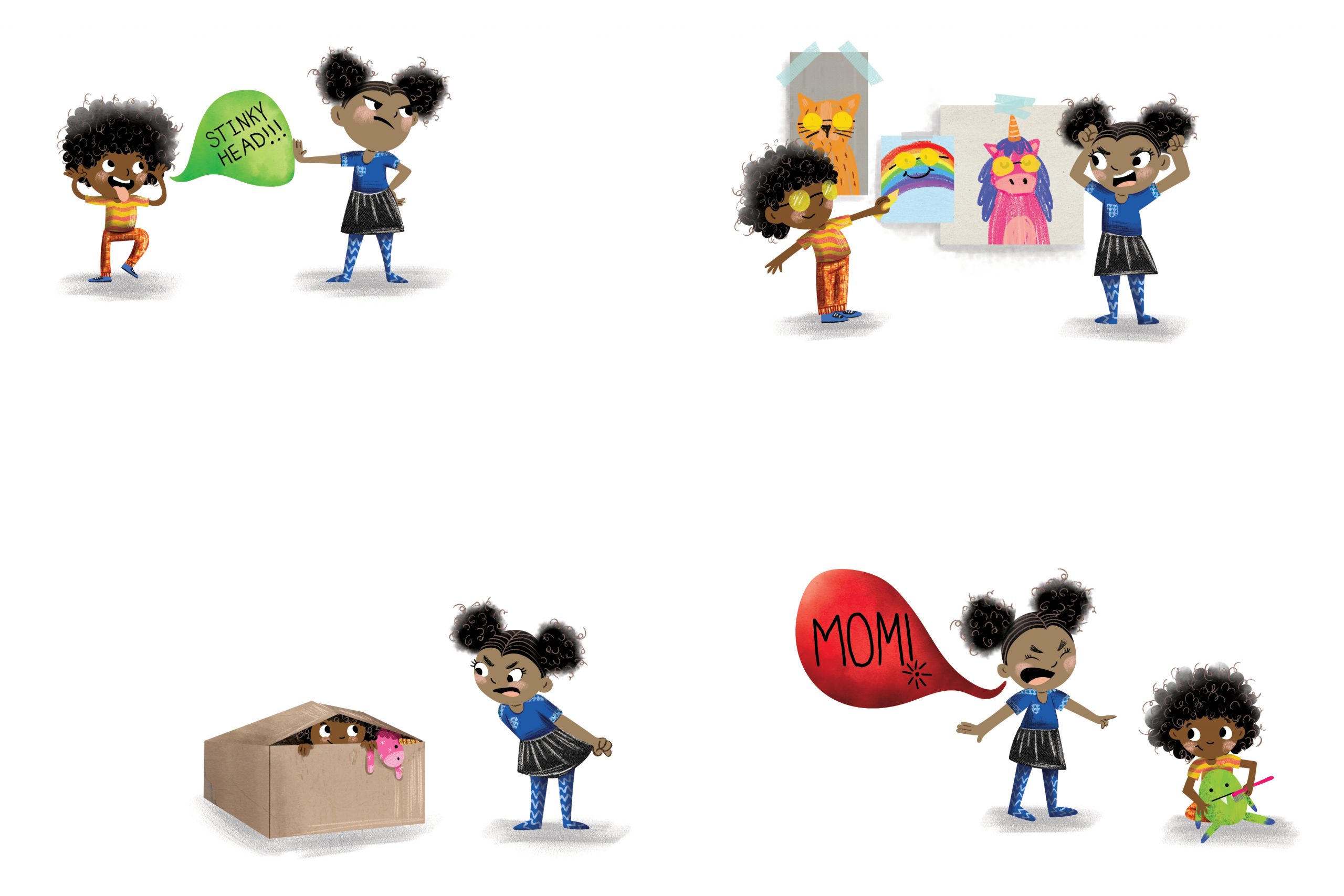
Sometimes simply having that perfect word, “cranky,” in our arsenal helps. When we can recognize, “Hey, I’m not actually deeply upset right now; everything’s more or less okay; I’m just cranky right now, and it will pass,” we’re already halfway home.
So get ready to giggle at the heroine of Cranky Right Now as she explores strategies for coping with crankiness. They may help the young people in your life. They may even help you. Not that you have a crankiness problem! Heavens, no. It’s those others around you. They started it …
Yours in absurdity,
Julie Berry
 JULIE BERRY is the author of many books for children, including Wishes and Wellingtons, The Scandalous Sisterhood of Prickwillow Place, and Happy Right Now. Her novel Lovely War was a New York Times bestseller, and The Passion of Dolssa was a Printz Honor title. Three things that make Julie cranky are paperwork, chewed pens and pencils, and mornings that come too soon. She lives with her family in Southern California. Learn more at julieberrybooks.com.
JULIE BERRY is the author of many books for children, including Wishes and Wellingtons, The Scandalous Sisterhood of Prickwillow Place, and Happy Right Now. Her novel Lovely War was a New York Times bestseller, and The Passion of Dolssa was a Printz Honor title. Three things that make Julie cranky are paperwork, chewed pens and pencils, and mornings that come too soon. She lives with her family in Southern California. Learn more at julieberrybooks.com.

Learn more and buy now
Amazon | Barnes & Noble | IndieBound | Bookshop | Sounds True
MINDFULNESS 24/7: 5 Simple Everyday Practices
 Mindfulness can be defined as the clear and calm energy of an intelligent alertness, spacious and awakening. The good news is it’s present all the time. It’s inherent in our human inheritance. We need only to remember this. Here are five simple everyday reminders for mindful living to try for yourself.
Mindfulness can be defined as the clear and calm energy of an intelligent alertness, spacious and awakening. The good news is it’s present all the time. It’s inherent in our human inheritance. We need only to remember this. Here are five simple everyday reminders for mindful living to try for yourself.
[You don’t need to take them on all at once. As you learn to incorporate each into your daily life, gradually, any one can be a model for all the others.]
1) BREATHE, YOU ARE ALIVE!—Conscious Breathing
Vietnamese Zen Master Thich Nhat Hanh, the grandfather of modern mindfulness, gives us this brief reminder to remember: “Conscious breathing is my anchor.” This thought stops me in my tracks. With breath now as basis of my awareness, I have returned to the present moment. Even when my mind might wander elsewhere, I can feel my breath in my body is in the present moment, my underwater anchor supporting my awakening mindfulness.
Allowing body, mind, and breath (spirit) to find each other helps me live fully. Paying attention to What Is, as it manifests right in front of my nose, lets me see things as they are, rather than through colored lenses of fantasy and personal cravings, invisible filters of cultural conditioning, and frames of ideology.
Conscious breathing doesn’t require taking a full breath, or any particular kind of breath at all. Rather, just being mindful of breath can amplify concentration which can, in turn, awaken full awareness. This can even lead to the cool, lucid plateau of meta-awareness: awareness of awareness.
See for yourself. Enjoy just three conscious breaths—right now!—and feel yourself solidly grounded in moment-to-moment awareness.
2) PAUSE—Intentional Conduct
To enjoy just one conscious breath means to pause. Pausing opens up a vital space. Between stimulus and unconscious reaction, I have space to discern how I might best wisely respond to what’s at hand. What can I do, right now, that could be harmful, and what might be beneficial? This too is spiritual practice, making evident my values via concrete action.
Throughout the day, I remember to pause, return to my breath, and check intention. A wonderful reminder is to smile. Aware of your breathing, notice what happens if you also give yourself the gift of a smile. Just a faint smile can help me realize I have enough reasons to be happy in the present moment. Earth beneath me, blue sky above, air in my nostrils—life itself! My smile also arouses my sense of taking responsibility, truly being author of my life, to live the life I was meant to live.
Plus, a smile can be contagious. Here is a fulcrum, so to speak, that can facilitate deep transformation. That is, to my intentionality I add relationality. It’s my intention for myself—and for others. I know my well-being is intertwined with the well-being of everyone else. We’re all in this together.
The Dalai Lama sometimes refers to his “selfish altruism.” That’s an honest way to view relationality. Who wants to live in a world where everyone’s depressed, burnt out, and close the edge!? I recognize I am not free unless everyone else is too.
To check how I’m doing, I use my life as the clear mirror of my practice. For instance, I look in the rear-view mirror of my actions. (I consider actions, by the way, as including thoughts and words, as well as deeds.)
As the East Bay Meditation Center reminds us all, there can be a difference between intention and impact. If my actions have good intentions but are triggering destructive emotions in others, it’s a good cause for engaging in self-examination as to what I still need to work through.
3) DEEP LISTENING—Awakening the Mind of Love
Now you know the three primary reminders I engage with in my everyday life: breathing, smiling, pausing. From that base, I am glad to offer three more.
Living in an Information Age, I feel like I’m being asked to get a glass of water off an open fire hydrant. It’s this way with stimuli in general—too much. Instead, I listen to what’s really important. I hear what’s not being said, as well as what is. This way, I can connect with info more deeply.
How does this work? I listen without my interrupting what’s going on. I’m simply present, without agenda or labels.
I train this skillful listening by being aware of each breath—arising, manifesting, and falling away. My body has been breathing all my life. Now I’m learning to be intimate with it. This awareness then becomes the model for my listening to my emotions and thoughts, as they too arise, take form, and fade away into other phenomena. I pay attention to whatever’s coming up within me, openly, with a nonjudgmental, gentle curiosity.
Just this morning, I had to stop my meditation midway. Difficult emotions and thoughts were arising, and I wanted to quit. Then I remembered not to look away. After all, the only way out is in. After setting my intention to give myself enough self-care to make it through, I returned to my meditation, and listened until I soon heard the key to where I need to go next with some of the current sensitive, vulnerable, juicy, meaty stuff in my life story. [To Be Continued.]
With the clarity of mindfulness, our heart opens to the realization we all want the same thing: an end of suffering and a life of happiness. When we liberate ourselves from our prison, the prison of the illusion of our separateness (“the skin-encapsulated ego,” as Alan Watts says), the eye in our heart can open: the eye of true love. Then we can see and hear ourselves and life around us as it is—a miracle.
4) SLOWLY, SLOWLY, STEP BY STEP—Walking Meditation
Sitting still may be the most commonly known posture of meditation in the world. You can see it in ancient South Asian statues and Mayan, alike. Yet the body has four basic postures: laying, sitting, standing, and walking. Being aware of our body, whatever position it’s in, is an everyday meditation anyone can practice.
Walking meditation is simply meditation walking. Try it—walking from a car to a door, or walking down a street. Notice your body and its posture. Is it relaxed, yet alert? Can you notice your breathing?
As you walk, notice how many steps for an in-breath; how many for an out-breath. Maintaining awareness of present-moment breathing, I’m no longer marching, marching off into a fictive future, to attain some abstract purpose. Instead, I’m permeable to what is. As it is. Within me, and all around. With each step, I’m arriving in the present moment—the only moment ever available for me to live.
Rather than trying to get anywhere—I’m almost aimlessly experiencing the miracle of walking. Zen ancestor Rinzai tells us the miracle isn’t to walk on water, nor to walk on coals. The real miracle is to walk on this green earth.
As with sitting, formal walking meditation can take a good 20 minutes before you can feel it digging a well of peace for you to draw from throughout your day. Such formal meditation might be just walking slowly for twenty minutes, as slow as synchronizing your left step to you inhalation, and your right step to your exhalation. Remembering to smile. Being aware of what it’s like to be stepping into the unknown, with eyes born for wonder.
5) SLOW FOOD IS SOUL FOOD—Mindful Meals
I practice sitting still in the morning and evening, and walking meditation before lunch or dinner. Plus, there’s a meditation you can practice three times a day: mindful meals. When I teach this, I begin with Raisin Meditation: experiencing the whole universe in a single raisin. And mindfulness meditation is as light and common as a raisin.
Anyhoo—you might try out these five basic steps the next time you’re alone at the table for a meal.
First, pause. Look. Smell. Take it in.
As you feel your gratitude arise at the generosity this meal represents, take a moment to express it. Even if it’s just “Thanks!” or “Grace!,” “L’chaim!” or “Bismillah!”—everyone knows how to do this. (And the food knows too, and will respond by tasting better when you give thanks for it.)
Second, as you bring it to your lips, pause to regard each bite.
Third, as you chew, please consider how this is a messenger of the whole cosmos. In any slice of food is present the gift of earth, rain, air, sun, and many hands. Awaken to the marvels of the interconnectedness of all things—interbeing—enabling this meal.
Fourth, remember to put down the fork. (Don’t reach for the next mouthful while still chewing the present one.)
Fifth, from time to time, pause between bites. Be mindful of how your body knows how to perfectly extract the nutrients from food . . . exchanging enzymes and aminos . . . adding to and supporting your life and your practice of the way of awareness. (Will somebody please say, “Amen!”?)
So, whether you’re a newbie, or wish to take a deeper dive, I hope any or all of these simple practices will water your roots and extend your wingspan.
Enjoy the journey!
 Gary Gach has hosted Zen Mindfulness Fellowship weekly in San Francisco since 2009. He’s author ofThe Complete Idiot’s Guide to Buddhism and editor ofWhat Book!? — Buddha Poems from Beat to Hiphop. His most recent book is PAUSE, BREATHE, SMILE: Awakening Mindfulness When Meditation Is Not Enough. This brings mindfulness full-circle, back to its roots as a spiritual as well as secular path for complete awakening. It’s available both in paperback and as an audio book.
His work has also appeared in over 150 periodicals, including the Christian Science Monitor, Harvard Divinity Bulletin, the Huffington Post, In These Times, The Nation, The New Yorker, and Yoga Journal, as well as a couple dozen anthologies, including Language for a New Century, and Technicians of the Sacred. More info: GaryGach.com.
Copyright © 2019 by Gary Gach. The author wishes to acknowledge Nick Aster for publishing a schematic draft of this listicle in GatherLAB.
Gary Gach has hosted Zen Mindfulness Fellowship weekly in San Francisco since 2009. He’s author ofThe Complete Idiot’s Guide to Buddhism and editor ofWhat Book!? — Buddha Poems from Beat to Hiphop. His most recent book is PAUSE, BREATHE, SMILE: Awakening Mindfulness When Meditation Is Not Enough. This brings mindfulness full-circle, back to its roots as a spiritual as well as secular path for complete awakening. It’s available both in paperback and as an audio book.
His work has also appeared in over 150 periodicals, including the Christian Science Monitor, Harvard Divinity Bulletin, the Huffington Post, In These Times, The Nation, The New Yorker, and Yoga Journal, as well as a couple dozen anthologies, including Language for a New Century, and Technicians of the Sacred. More info: GaryGach.com.
Copyright © 2019 by Gary Gach. The author wishes to acknowledge Nick Aster for publishing a schematic draft of this listicle in GatherLAB.
Buy your copy of PAUSE, BREATHE, SMILE at your favorite bookseller!
Sounds True | Amazon | Barnes & Noble | Indiebound


Brené Brown on Embracing Vulnerability
“You cannot access empathy if you’re not willing to be vulnerable.” What a rich and evocative statement from our friend and Sounds True author Brené Brown. There is such a deeply-rooted pull to move toward those emotional-states that we identify as “positive” or “light” or “spiritual” – along with a counter move away from those “darker” or challenging and exposing emotions such as vulnerability, sadness, and grief. But, as Brené reminds us, vulnerability is the ground of all of the so-called positive emotional states, including those of love, joy, and belonging.
When we can allow ourselves to be naked, exposed, to be profoundly touched by whatever appears, we can meet this life – and the sweet, beautiful heart of another – in the most precious way. It is in this turning into the immediacy of our experience, in a truly embodied way, that we come to discover the many fruits of this sacred world. There are times, of course, when doing so is not easy, when it takes everything we have (and more), and feels completely counter-instinctual. But somehow, by some mysterious grace, we learn to stay with what is there, knowing that it has something very precious to show us about ourselves, and about the true nature of love.
If you are interested in learning more about Brené’s teachings and research in the areas of vulnerability, shame, and worthiness, you may enjoy her original audio programs with Sounds True:
The Gifts of Imperfect Parenting: Raising Children with Courage, Compassion, and Connection
Men, Women, and Worthiness: The Experience of Shame and the Power of Being Enough
The Power of Vulnerability: Teachings on Authenticity, Connection, and Courage
Enjoy the following video from Brené on the gifts of embracing vulnerability.
How Reframing Conflicts Can Actually Help Your Relationship
In the Internal Family Systems model, the practice of speaking for, rather than from, parts when they are triggered is an important aspect of Self-leadership. When people receive a message from you, it has two components: the content (the actual words) and the energy behind the words. When your protective parts are upset and speak directly to another person, invariably they will trigger parts in the other. When, on the other hand, you listen to your protectors and then speak for them, from your Self, the message is received in a very different way, even if you use the same words that your parts are saying. Your words lose their judgmental sting or their off-putting desperation and coerciveness. Instead, your respect and compassion for the other person will be heard in addition to the courage of your convictions.
Self energy has a soothing effect on any parts it touches, whether they are in you or in another person. When your parts trust that you will speak for them, they feel less driven to take over and explode at people. What they really want is to have a voice—to be listened to by you and to have their position represented to others.
Practice: SELF-LEADERSHIP AS A WAY OF INTERACTING IN A CONFLICT
These practices—remaining the “I” in the storm or the empty vessel, and speaking for rather than from your parts—can be combined into a general way of relating as a couple when you have conflict. When you begin to fight, each of you can try the following:
- Pause
- Focus inside and find the parts that are triggered
- Ask those parts to relax and let you speak for them
- Tell your partner about what you found inside (speak for your parts), and
- Listen to your partner from your open-hearted Self
When a couple is embattled and each focuses inside, as in step 2, usually they only hear from their protectors. If it feels safe enough, moving an extra step toward vulnerability can reap big rewards. That step involves staying inside long enough to learn about the exiles that your protectors are guarding, and then telling your partner about these vulnerable parts. In most cases, when one partner has the courage to reveal the vulnerability that drives their protectiveness, the atmosphere immediately softens and the couple shifts toward Self-to-Self communication.
This is an excerpt from You Are the One You’ve Been Waiting For: Applying Internal Family Systems to Intimate Relationships by Richard C. Schwartz, PhD.
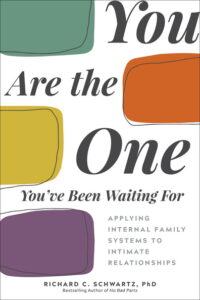
Learn More
Amazon | Barnes & Noble | Bookshop | Sounds True


